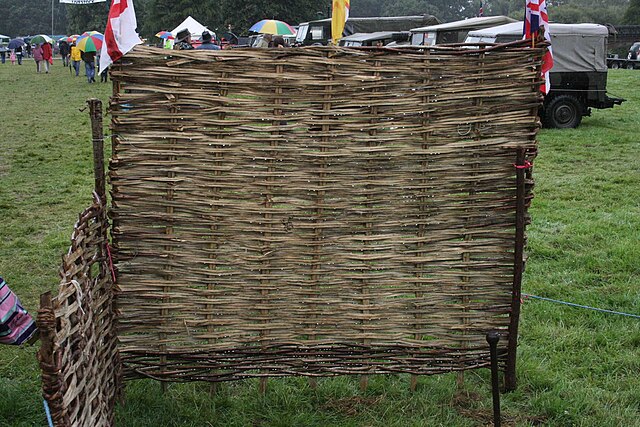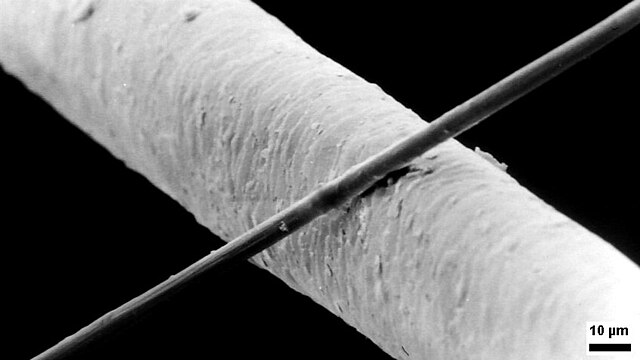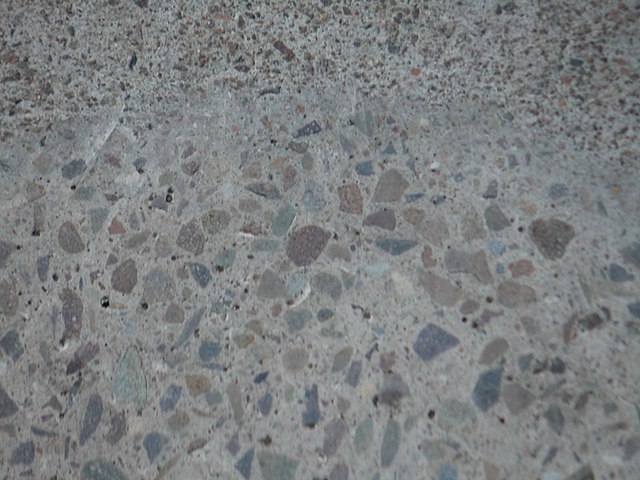Wattle and daub is a composite building method used for making walls and buildings, in which a woven lattice of wooden strips called "wattle" is "daubed" with a sticky material usually made of some combination of wet soil, clay, sand, animal dung and straw. Wattle and daub has been used for at least 6,000 years and is still an important construction method in many parts of the world. Many historic buildings include wattle and daub construction.
Wattle and daub in wooden frames
A wattle and daub house as used by Native Americans of the Mississippian culture
A woven wattle gate keeps animals out of a 15th-century cabbage patch. (Tacuinum Sanitatis, Rouen)
Wattle panel
A composite material is a material which is produced from two or more constituent materials. These constituent materials have notably dissimilar chemical or physical properties and are merged to create a material with properties unlike the individual elements. Within the finished structure, the individual elements remain separate and distinct, distinguishing composites from mixtures and solid solutions. Composite materials with more than one distinct layer are called composite laminates.
A black carbon fibre (used as a reinforcement component) compared to a human hair
Concrete is a mixture of adhesive and aggregate, giving a robust, strong material that is very widely used.
Plywood is used widely in construction
Composite sandwich structure panel used for testing at NASA








